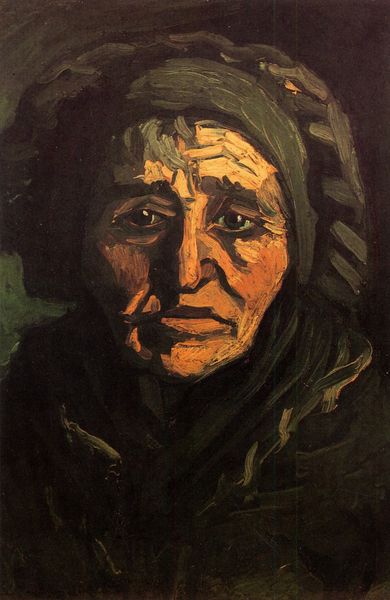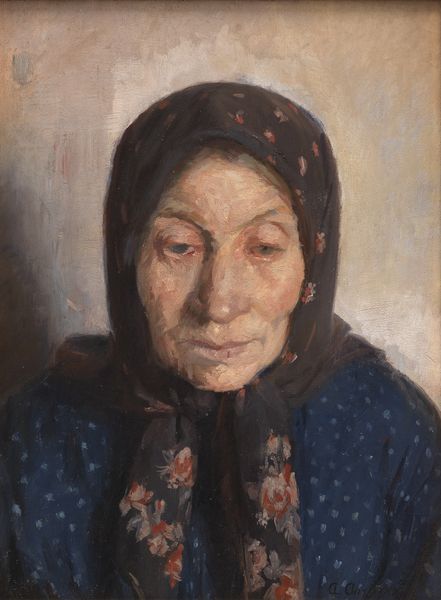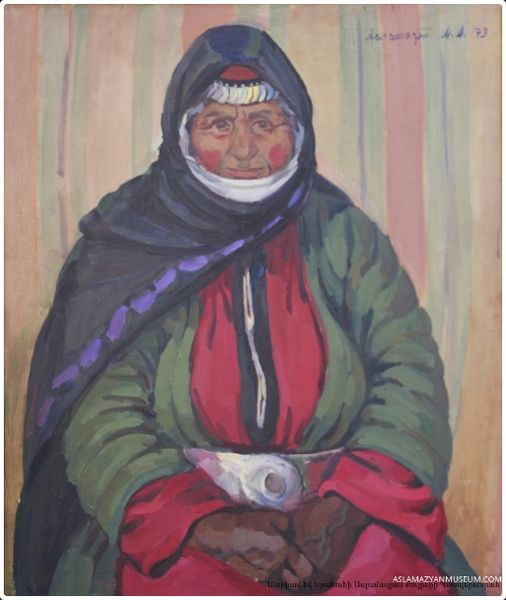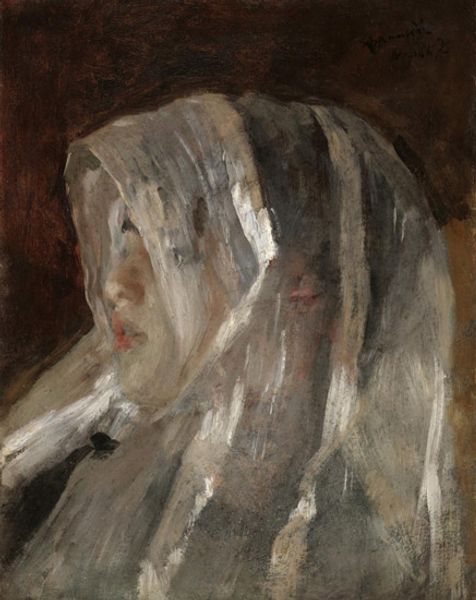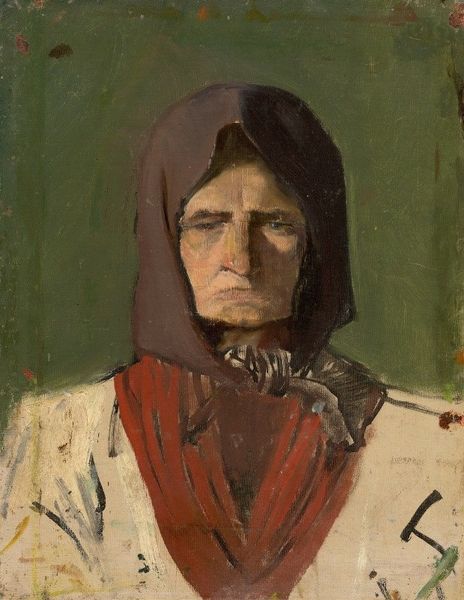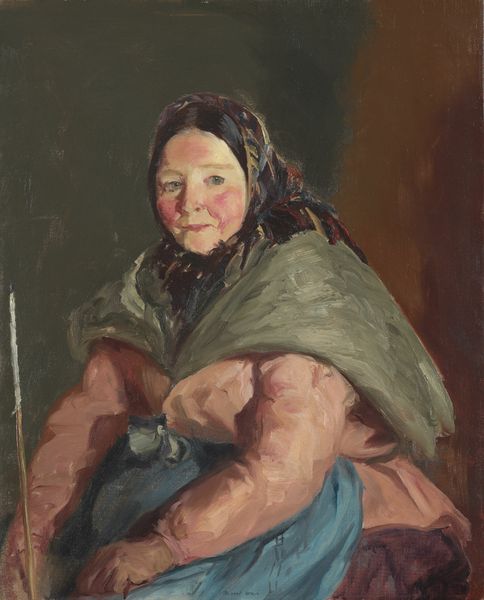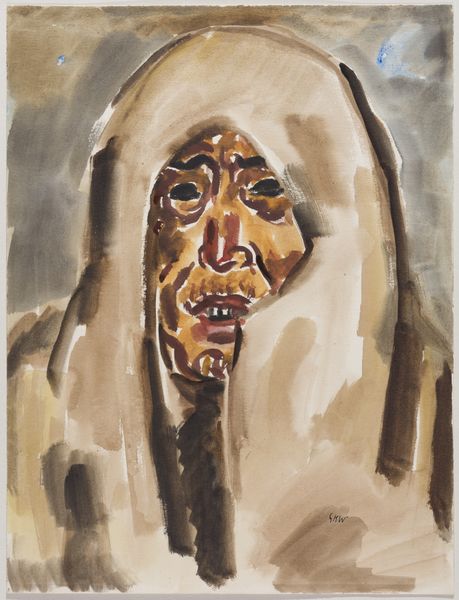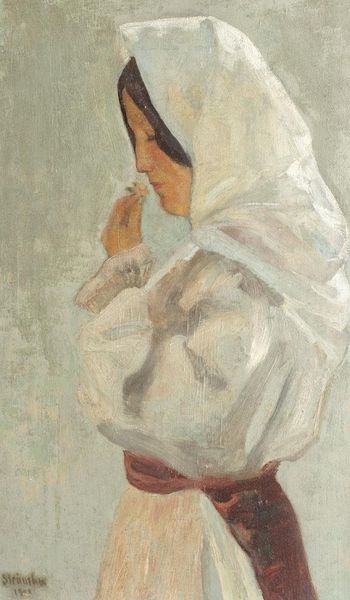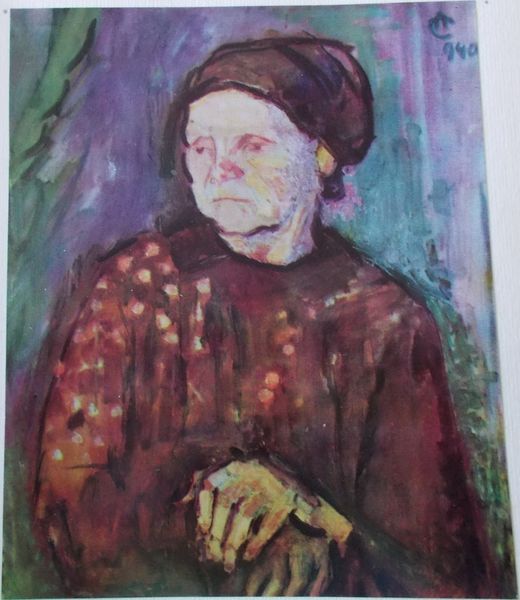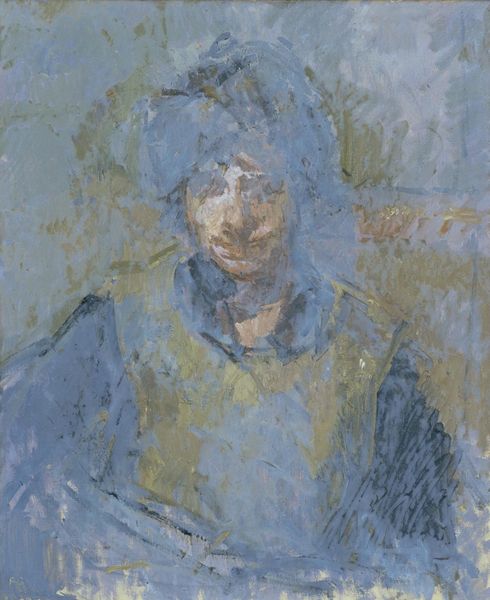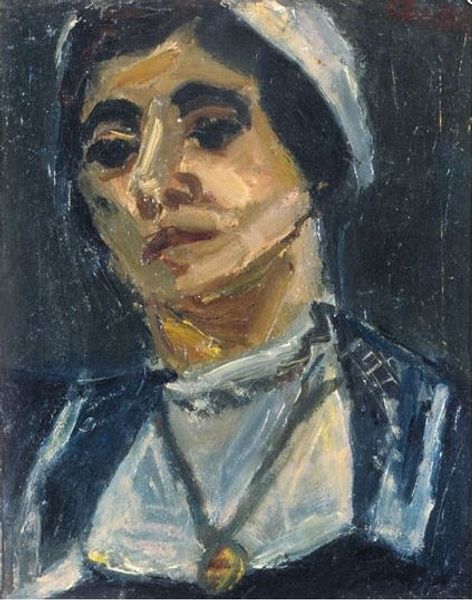
painting, oil-paint
#
portrait
#
narrative-art
#
painting
#
oil-paint
#
oil painting
#
fine art portrait
#
realism
Dimensions: 52 x 37 cm
Copyright: Mariam Aslamazian,Fair Use
Curator: Look at the palpable ache in the portrait "The Victim of Genocide" painted in 1947 by Mariam Aslamazian. The artist used oil paints. Editor: The gray and brown palette just bleeds into each other, doesn't it? She appears almost spectral, like a fading memory. It gives a haunting, timeless quality to her suffering. Curator: Indeed. Aslamazian’s piece comes on the heels of immense historical turmoil. Given the date, one interprets it through the shadows cast by World War II and the renewed awareness of genocidal acts that scarred the era. This makes me wonder what motivated Aslamazian to choose such a title? Was she perhaps compelled to memorialize and provoke the audiences? Editor: That is so true. As an artist, I look at how those heavy, almost muddied strokes convey a profound weight – both emotional and physical. Her eyes... they seem to hold a knowing sadness, like she has witnessed far too much. The rough texture, especially around her face, almost mimics the scars, real or imagined, left by trauma. It is a visceral reaction isn’t it, seeing this in our time…a time that is riddled with trauma and genocide, if not active war, everywhere. Curator: It speaks volumes about the cyclical nature of history and the artist's social commentary. The focus is undeniably on individual experience shaped by larger sociopolitical forces. And the simple headscarf that’s she’s wearing... how we perceive that as the visual embodiment of resilience and vulnerability is striking. I think her portraits also encourage reflections on what institutions – or even artists – can do, could have done, to combat injustice. Editor: Perhaps this is why the emotional aftershock has had me captivated! Her painting leaves us not with answers, but with lingering questions about what it means to witness, remember, and hopefully, learn. It forces us to engage with the reality, that is right here, in this world, isn't it? Curator: Yes, an encounter of our own. What can we carry, change? How to process such collective history that surrounds her? It really stays with you, doesn't it?
Comments
No comments
Be the first to comment and join the conversation on the ultimate creative platform.

